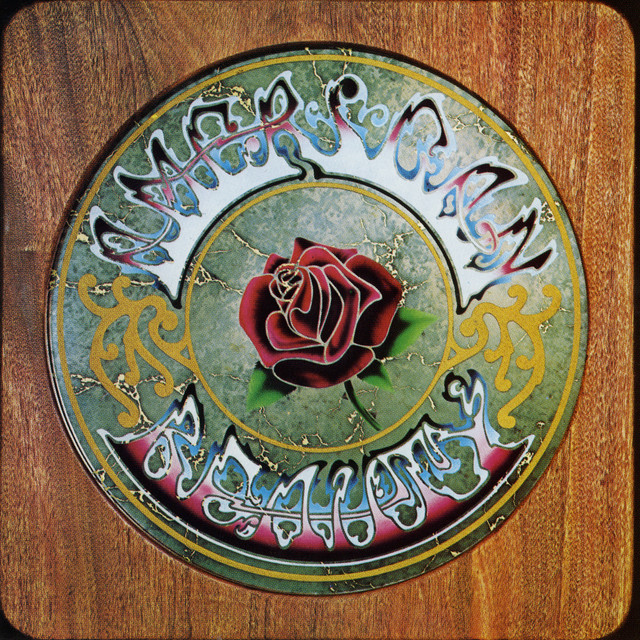Beats Without Borders | Soca
March 24, 2023
Rio de Janeiro’s Carnival may be the largest Carnival festival in terms of notoriety, but there’s another group of Carnivals out there: the Caribbean Carnivals. One facet of the Caribbean Carnival scene is the output of songs that are meant to play during Carnival. Most of these songs are from the subsect of music known as soca. But what exactly is soca?
Soca was first developed in Trinidad and Tobago in the early 1970s by Garfield “Lord Shorty” Blackman in an attempt to revitalize the calypso genre, which was losing popularity among the younger generation. The name soca came about as a misspelling. Lord Shorty initially spelled the style as “sokah,” which stood for the “Soul of Calypso,” with the “kah” being from the Sanskrit alphabet. He specifically used the Sanskrit spelling to honor the East Indian rhythms that were used in his first works, such as his 1973 release “Indrani.”
As soca began to take hold across Trinidad and Tobago, the style began to permeate Carnival competitions across the island. In 1978, Linda McCartha Monica “Calypso Rose” Sandy-Lewis was fresh off her win of the Trinidad and Tobago Road March competition, being the first woman to win the competition. Her entry in that year’s Road March competition marked the first time a soca song won the Road March competition. Not only that, but in 1978, Calypso Rose also became the first woman to win the Calypso King competition.
As soca was beginning to establish firm roots in Trinidad and Tobago in the 1980s, other musical styles began to form in the Caribbean. The two most notable of these are zouk and bouyon. These styles will be brought up again later. Soca in the 1980s still had a very heavy emphasis on calypsonian elements and had yet to establish much of an independent identity. The Trinidadian Road March champion songs of the time, like Edwin “Crazy” Ayoung’s 1985 winner, “Soucouyant,” showcase that aspect of the style.
In 1997, after gaining fame as a vocalist over the previous 11 years, Machel Montano — as frontman of the band Xtalix — won the Trinidadian Road March competition with his song “Big Truck.” His victory came at the ripe age of 22, making him the youngest winner of the Road March competition at the time.
In 1993, a new competition for Carnival was announced: the International Soca Monarch competition. The competition was split into two segments: International Soca Monarch for “power soca,” which includes songs above 135 bpm, and Groovy Soca Monarch for “groovy soca,” which includes songs under 134 bpm. With soca being a Trinidadian creation, it’s no surprise that Trinidadian artists dominated the competitions.
It would take until 2007 for an artist not from Trinidad and Tobago to win. Carlton “Biggie Irie” Cordel would go on to win the Groovy Soca Monarch competition. Around this time, soca began to separate itself from calypso. Biggie Irie’s winning song, “Nah Going Home,” shows this. Calypso still typically uses traditional instruments like steel pan drums and brass instruments as the backbone of the style, while soca typically embraces new instrumentation, such as the synthesized melody in the chorus of “Nah Going Home.”
As soca began to separate itself from calypso, multiple islands began to develop their own take on the style. Dominican artists blended bouyon with soca to make bouyon soca. St. Lucian artists melded kuduro, zouk, soca and Lucian drumming to make Dennery segment. Grenadian artists made their own variation to fit the Jab Jab festivities of their Carnival, which they also christened as Jab Jab. Every island in the Caribbean has their own Carnival festivities, and, while soca isn’t a mandatory participant, you would be hard-pressed to find a modern Caribbean Carnival where soca isn’t present.
The first major hit by a soca artist came in 2007, when London-born Bajan artiste Alison Hinds’ song “Roll It Gal” managed to break into the UK Singles Chart, albeit only at 135th. This came around two years after the song was initially released in Barbados. The song gained more notoriety after a reworked version of the song was released by J-Status in 2007. The J-Status version also featured a pair of Bajan artists in the infancy of their careers: Rihanna and Shontelle. The J-Status rework was released only a month before Rihanna’s smash hit “Umbrella” was released to critical acclaim.
Following her hits like “Super Bass,” “Fly” and “Starships,” Trinidadian native Nicki Minaj released “Pound the Alarm” as the fourth single from her album Pink Friday: Roman Reloaded. The song’s music video was shot during the 2012 Trinidad Carnival, and, in the video, Minaj shares the stage with soca stars Montano and Bunji Garlin. Garlin would have his big break at the end of the next year, with his song “Differentology” being a big hit in both the soca and EDM worlds. The song landed Garlin a contract with RCA Records and the song was remixed by Major Lazer before the group’s big break later that year.
In 2017, Kes released a song for the 2017 Carnival season called “Workout,” which featured a then-unknown singer named Nailah Blackman. Nailah Blackman, who is the granddaughter of Lord Shorty, was launched into the upper levels of the soca stratosphere off the back of the song. In the six years since the song was released, she has become one of the most prominent artists within the genre. She’s collaborated with a wide variety of artists, including Shenseea, Konshens, Oxlade and a member of the Kosoko Royal Family of Nigeria in Adekunle Gold. Nailah Blackman has been pushing soca in ways it hasn’t been pushed yet, and I’m sure she’ll continue elevating soca to levels that have yet to be achieved.
The 2019 Carnival season marked a cultural shift in terms of the artists that were seeing success in the power soca competitions. Shertz “Problem Child” James, a soca artist from St. Vincent and the Grenadines, released two songs, “Good Up Good Up” and “Nasty Up,” and both became hits for Carnival, but neither managed to win any awards. Problem Child’s fellow countryman, Gamal “Skinny Fabulous” Doyle, released “Famalay” with Garlin and Montano for the same Carnival season. Skinny Fabulous won the Trinidad Road March title, becoming the first foreign soca artiste to win the prestigious title.
After Biggie Irie won the Groovy Soca Monarch title in 2007, it would take 12 more years for the International Soca Monarch title to leave Trinidad and Tobago. Hollice “Mr. Killa” Mapp, a Grenadian artist, released the song “Run Wid It” for the 2019 Carnival season. The song, which featured on a Jab-Jab-influenced riddim — which is an instrumental shared by a number of soca and reggae artists, then often released as a compilation; one example being the Osaka Riddim from 2019, which Preedy, 5Star Akil, Kerwin DuBois, Charly Black, LFS Music and Voice used to create tracks for the 2019 soca season — that launched him into the forefront of the season’s playlists. The song became so popular that the Port of Spain Police Department issued a warning against taking the lyrics literally. This warning seemed to be a stamp of approval, as Mr. Killa became the first non-Trinibagonian to win the International Soca Monarch title.
The International Soca Monarch competitions took a hiatus during the COVID-19 pandemic, and, sadly, the competition will not be returning for the 2023 season. However, the Road March competition for the 2023 season was one of the most competitive seasons yet. Several soca legends came together for the Road March competitions, including Patrice Robert, Problem Child and Superblue with “Pieces;” Superblue and Lyrikal with “Jouvert Madness;” Nailah Blackman and Skinny Fabulous with “Come Home;” Voice and Alison Hinds with “The Return” and Voice plus Lil Natty and Thunda of Wuss Ways with “My Stage Now.” In the end, Bunji Garlin took the crown with “Hard Fete,” receiving his second Road March crown.
Although the 2023 Caribbean Carnival season has mostly passed, there are still Carnivals that have yet to occur. To help us prepare for the Carnivals that will be coming in April, I have attached a soca starter kit to this article. Carnival may only come once a year, but soca is a year-round event. Although it may be snowing in March here in Michigan, that doesn’t mean we can’t let soca take us to a place of warmth and sun.


































